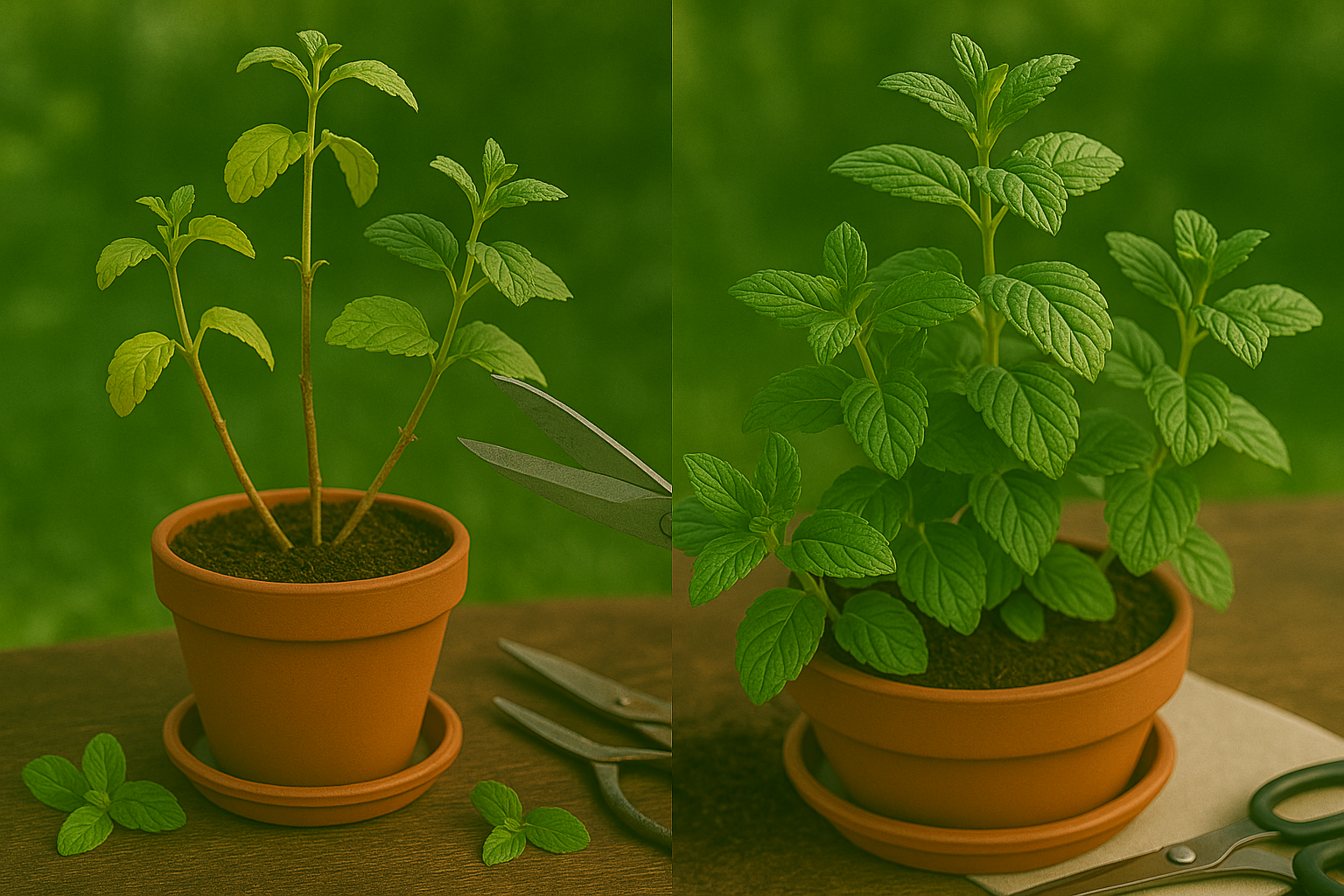Why Pruning Mint Boosts Growth
Pruning mint regularly is a simple but powerful way to encourage healthier, bushier growth in your herb garden. When you snip back the stems, you stimulate the plant to send out new shoots from the base, leading to fuller, more vibrant foliage.
This practice also helps prevent mint from becoming leggy—when stems grow long and sparse, with fewer leaves—which can make the plant look untidy and reduce its yield. A well-pruned mint plant will grow densely, making it easier to harvest flavorful leaves throughout the season.
On the flip side, neglecting to prune allows the mint to sprawl unchecked, often resulting in tough, woody stems and leaves that lose their characteristic punchy flavor. To keep your mint at its best, aim to trim the tips every few weeks, especially during the active growing period. A pair of kitchen scissors and a few minutes of attention can make all the difference.
When Is the Best Time to Prune Mint?

The best time to prune mint is during late spring and early summer, when the plant is in its peak growth phase. Look for signs that your mint is ready to be pruned, such as tall, spindly stems, crowded leaves, or the first signs of flowering.
Regular light trims—snipping off the top leaves or stems every week or two—help keep your mint bushy and prevent it from becoming leggy. After the plant flowers, a larger seasonal cutback is beneficial: trim the stems just above a pair of healthy leaves to encourage a fresh flush of growth.
Pruning not only keeps your mint tidy but also prevents it from taking over your garden and produces tastier, more aromatic leaves.
Step-By-Step Guide

To get your mint plant thriving with fuller, bushier growth, start by gathering a few basics: a pair of clean, sharp shears or scissors, and gloves if you’re sensitive to plant oils. Begin by inspecting your mint and identifying any yellow, damaged, or woody stems—these should be trimmed out first. Cut them all the way back to the base of the plant for a tidy look and to encourage new, healthy growth.
For regular maintenance or shaping, focus on pruning just above a leaf node (the spot where two leaves meet the stem); this is key, as new shoots will grow outward from these nodes. Always avoid cutting more than one-third of the plant at a time to prevent stress and allow the mint to recover quickly.
If you are simply harvesting leaves for the kitchen, pinch or snip individual stems, again just above the nodes, while leaving plenty of greenery behind. Hard pruning, where you cut back a larger portion of the plant, is best done in early spring or late summer to rejuvenate older mint beds. This helps keep the plant producing lush leaves and prevents it from becoming leggy.
With these easy steps, your mint will stay vigorous, healthy, and ready for fresh harvests all season long.
Common Mistakes to Avoid When Pruning Mint

When pruning mint, avoid cutting back more than a third of the plant at once—over-pruning can shock the mint and stunt its regrowth. Don’t cut stems too low or strip them entirely, as this weakens the plant and slows recovery. Always use sharp, clean scissors or shears to make clean cuts; jagged or dirty tools can invite disease.
Many gardeners forget to prune after flowering, but leaving spent blooms can cause your mint to become leggy and unproductive. Regular, gentle trimming keeps your mint bushy, healthy, and full of fresh growth all season long.
Caring for Your Mint After Pruning

After pruning your mint, it’s important to give the plant some extra care so it bounces back quickly and stays healthy. Water the newly pruned mint thoroughly, but avoid soaking the soil—consistency is key, as mint prefers evenly moist earth.
Feed with a diluted, balanced liquid fertilizer to help stimulate fresh growth, but don’t overdo it; once every two to four weeks is plenty.
If your mint is in a pot and looks crowded or roots are coming out of the drainage holes, consider root trimming or repotting into a larger container to prevent the plant from becoming pot-bound.
Add a thin layer of mulch around the base to help retain moisture and keep the roots cool, especially in warmer weather.
To encourage bushier regrowth, pinch off new tips regularly and check for any signs of pests or disease, such as discolored or curling leaves. Routine monitoring lets you catch issues early and keeps your mint thriving after each prune.
Special Tips for Different Mint Varieties
When caring for different mint varieties, tailor your approach for the best growth. Peppermint and spearmint are vigorous, so prune them every couple of weeks to keep them bushy and prevent their roots from taking over your garden—consider growing them in pots to contain their spread.
Apple mint is a bit less aggressive but still benefits from regular trimming to maintain its shape and flavor. For ornamental or less robust types, like chocolate mint or curly mint, prune more gently and water consistently, as they’re less tolerant of neglect.
Always check your variety’s needs, since some mints are more prone to disease if overwatered.
